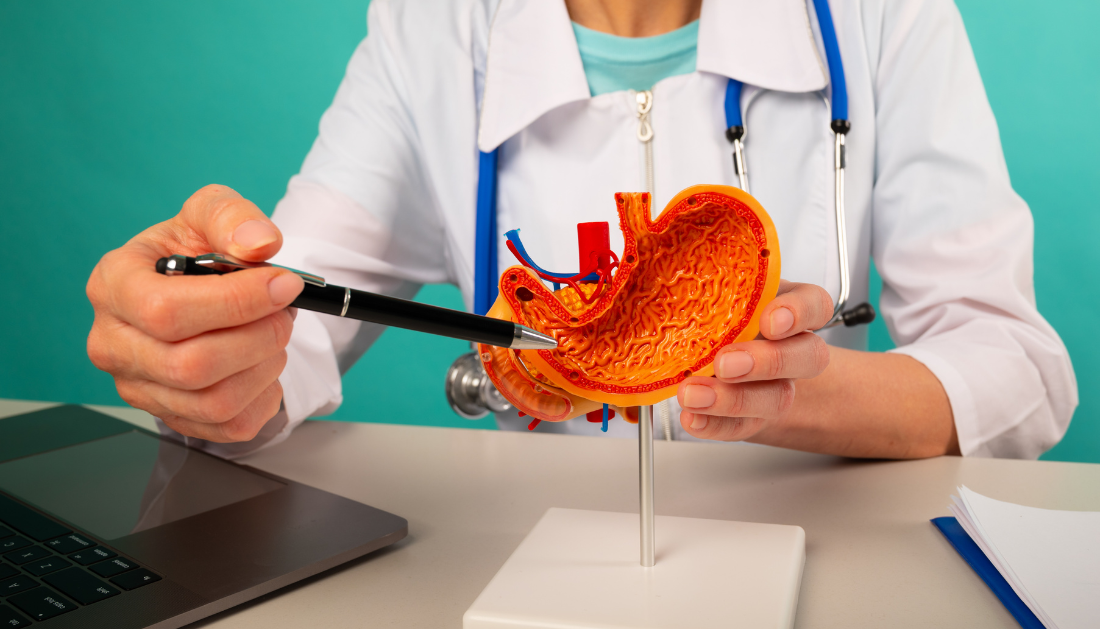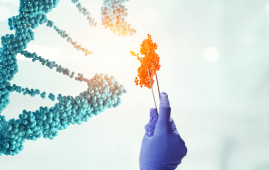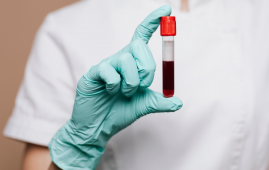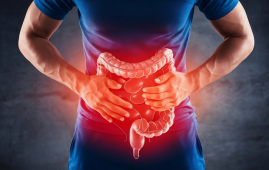

In a recent publication in Scientific Advances, scholars unveiled a bioresorbable, cordless, passive sensor designed to locally monitor pH and promptly identify stomach leakage.
Background: Markers encircling internal organs offer insights post-surgery, such as changes in intra-abdominal pH subsequent to stomach surgery. Conventional radiological methods are neither biocompatible nor suitable for temporary implants.
A wireless pH sensor embedded within could be the most effective means for swift detection. Recent advancements in hydrogels capable of generating responses show potential for point-of-care medical diagnostics.
Integration of pH-responsive hydrogels into wireless electrical apparatuses may prove to be a sound engineering approach.
About the study:
In the current investigation, scholars devised a bioresorbable contrivance for early detection of stomach leakage post-gastric surgery, employing passive analog-type wireless communication to ensure swift responsiveness and early clinical outcomes.
A pH-sensitive hydrogel served as the transducer, interfacing with a mechanically fashioned inductor-capacitor circuit, facilitating wireless data retrieval. The hydrogel, endowed with pH-responsive tertiary amines, yielded specific, resilient, degradable, and pH-sensitive hydrogels.
This substance furnished supportive matrices for inductor-capacitor (LC) resonance circuits, swiftly translating dimensional modifications into resonant frequency alterations precisely gauged through inductive links to external reading devices.
Mechanical models aided in determining the optimal hydrogel and circuit component geometries, particularly that of the sensor inductor. Systematic examinations in animals and in vitro device setups validated the device’s capability for continuous pH monitoring.
Scholars ascertained the technology’s biocompatibility and bioresorbability through histological analyses, complete blood count (CBC) assessments, and serum chemistry evaluations.
The fabrication process involved amalgamating poly(ethylene glycol)diacrylate (PEGDA), poly[2-(diisopropylamine)ethyl methacrylate (PDPAEMA), and 2,2-dimethoxy-2-phenyl acetophenone (DMPA), curing the hydrogel via UV radiation, and laser-cutting Zn foils to forge an inductor with spiral coils.
Molten bioresorbable wax was infused into the channels, yielding a uniform, electrically insulating stratum. The placement of the inductor and capacitor was determined by demolding the wax-coated Zn coil and casting the pH-responsive hydrogel prepolymer.
The scholars delineated the capacitor’s upper and lower electrodes via laser-cut Zn foil discs. The reading system comprised a VNA and a single-turn coil. Configuring the VNA to reflective mode permitted measurements of the actual and virtual segments of the S-matrix element S11.
The pH of all buffer solutions and biofluids underwent calibration and validation via an ion-sensitive field-effect transistor pH meter.
The study encompassed adult male Lewis rats aged 14-16 weeks, acclimatized for up to 7 days prior to surgery. Inhalation of isoflurane vapor administered general anesthesia during the implantation procedure.
The team conducted functional trials on euthanized pigs and various rat models. Blood samples were obtained four, six, and twelve weeks post-implantation, and explanted organs were preserved in neutral-buffered formalin for histological analysis.
Results: The platform monitored gastric fluid leakage during the critical risk phase post-laparoscopic sleeve gastrectomy (LSG). It utilized wireless readout coils to gauge the sensor circuit’s resonance frequency, influenced by the surrounding biological fluid acidity.
Any leaked stomach contents (pH 1.0 to 3.0) infiltrating the hydrogel induced edema and abrupt resonant frequency (FS) shifts, necessitating surgical intervention. The device degraded spontaneously post-healing, mitigating hazards and expenses associated with future extraction procedures.
The pivotal component of the monitoring device for stomach leakage was the pH-reactive hydrogel encased within an inductor with a sinuous spiral configuration.
The hydrogel underwent degradation in biological fluids via hydrolysis of the constituent ester groups or ether cleavage during oxidation, rendering it water-soluble, innocuous, and expellable from the human body. The inductor design aimed to reduce mechanical compliance while upholding low resistance and a high quality (Q) factor.
Performance evaluations focused on wireless readout demonstrated the sensor’s accuracy across a broad range of approximately 3.0 cm through air and 2.0 cm through adipose and lean tissues.
Non-destructive medical imaging modalities like ultrasonography could assist in pinpointing the precise deployment of sensors during routine bedside examinations. Supplementary trials indicated that the sensor could respond to acid injections up to 6.0 cm away within an hour.
Scholars utilized small and large animal models to assess stability and operational efficacy over a seven-day therapeutically pertinent timeframe.
The study elucidates the implantation of a pH sensor in rat models as innocuous to organ tissues, devoid of inflammatory responses like immune cell aggregation.
The research presents a wireless apparatus for postoperative monitoring of gastric leakage and biosorption subsequent to surgery. The sensor, catalyzing water and hydrogen ion diffusion into a biodegradable hydrogel, facilitates volumetric expansion and inductance alterations.
These alterations are wirelessly detected as resonance frequency shifts and recorded via near-field coupling to an external reader. Mechanical models aid in design decisions, with potential enhancements encompassing augmentation of wireless sensing range and amalgamation of tethered and deployable hydrogel device designs.
For more information: Bioresorbable, wireless, passive sensors for continuous pH measurements and early detection of gastric leakage, Scientific Advances, https://www.science.org/doi/10.1126/sciadv.adj0268
more recommended stories
 DNA Damage Triggers New Cell Death Pathway
DNA Damage Triggers New Cell Death PathwayTumor cells are killed by chemotherapy,.
 Comorbidities Worsen Sleep Quality in Multiple Sclerosis
Comorbidities Worsen Sleep Quality in Multiple SclerosisComorbidities in multiple sclerosis (MS) are.
 Latitude and Skin Type-Based Vitamin D Guidelines
Latitude and Skin Type-Based Vitamin D GuidelinesIn a recent study published in.
 AOMs Reduce CVD Risk in Obese Medicare Patients
AOMs Reduce CVD Risk in Obese Medicare PatientsObesity is a leading cause of.
 Dopamine Linked to Brain Development in ASD
Dopamine Linked to Brain Development in ASDSummary: A recent study links autism.
 Microplastics in Human Blood: Cardiovascular Risk
Microplastics in Human Blood: Cardiovascular RiskAn investigation disclosed in the esteemed.
 Gene Therapy Offers Hope for X-linked Sideroblastic Anemia
Gene Therapy Offers Hope for X-linked Sideroblastic AnemiaALAS2 gene mutations that are essential.
 Mini Brains: Advancing Alzheimer’s Research
Mini Brains: Advancing Alzheimer’s ResearchIn summary, scientists created microscopic “mini-brains”.
 Inflammatory Bowel Disease Linked to Parkinson’s Disease
Inflammatory Bowel Disease Linked to Parkinson’s DiseaseBoth inflammatory bowel disease (IBD) and.
 NMSC Skin Cancer: Rhenium-188 as Surgery Alternative
NMSC Skin Cancer: Rhenium-188 as Surgery AlternativeAccording to a recent study published.

Leave a Comment